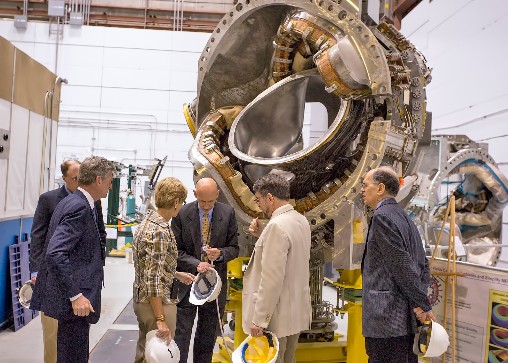
Spherical Fusion Reactors as an Option
Tokamak fusion reactor designs have a proven record of being used in international fusion projects such as the ITER project, the Joint European Torus (JET) project, and the closed Tokamak Fusion Test Reactor (TFTR) project at Princeton. Currently the standard tokamak design has been the default for fusion energy, but through prior research, a new prototype for fusion energy has been purposed. This prototype is known as spherical fusion reactors and are more compact, cheaper, require less magnetism, and can potentially lead the way for fusion energy.
The Princeton Plasma Physics Laboratory (PPPL) with the collaboration of Oak Ridge National Laboratory, Columbia University, and the University of Washington at Seattle have all teamed to operate the National Spherical Torus Experiment (NSTX). The NSTX is a more spherical tokamak and is currently undergoing an upgrade to be completed this year that will “double its current and heating capacity and the strength of the magnets that confine the plasma inside the magnetic fields”. Now, spherical fusion reactors are different from the “donut” shaped fusion reactors, commonly known as tokamaks. It is from this new design that provides one major advantage: the ability to confine a higher plasma pressure for a given magnetic field strength.
The NSTX may be an effective design by being able to have beta levels three times higher than the average tokamak fusion reactor. Now beta levels play an important role in fusion energy, because the capacity to harness a high beta level, will in turn create a more cost-effective device.
The upgrades that are currently wrapping up for the NSTX project could be a tremendous leap forward for PPPL and the fusion community. The $94 million dollar upgrade will increase the temperature range from 20-60 million degrees Celsius, closer to the 100 million degree Celsius goal. Additional upgrades includes the doubling of the reactors magnetic field and current. These upgrades are one more step in the direction of having a commercial fusion reactor in America by 2050.
The research performed after the NSTX upgrade will give ITER a game plan in how to control the hot plasma that bombards the walls of the reactor and ultimately a template will be produced in taking America to a future that commercializes fusion energy, if NSTX stays true to its mission, which “is to find the most attractive means of producing fusion in terms of technology and cost”






